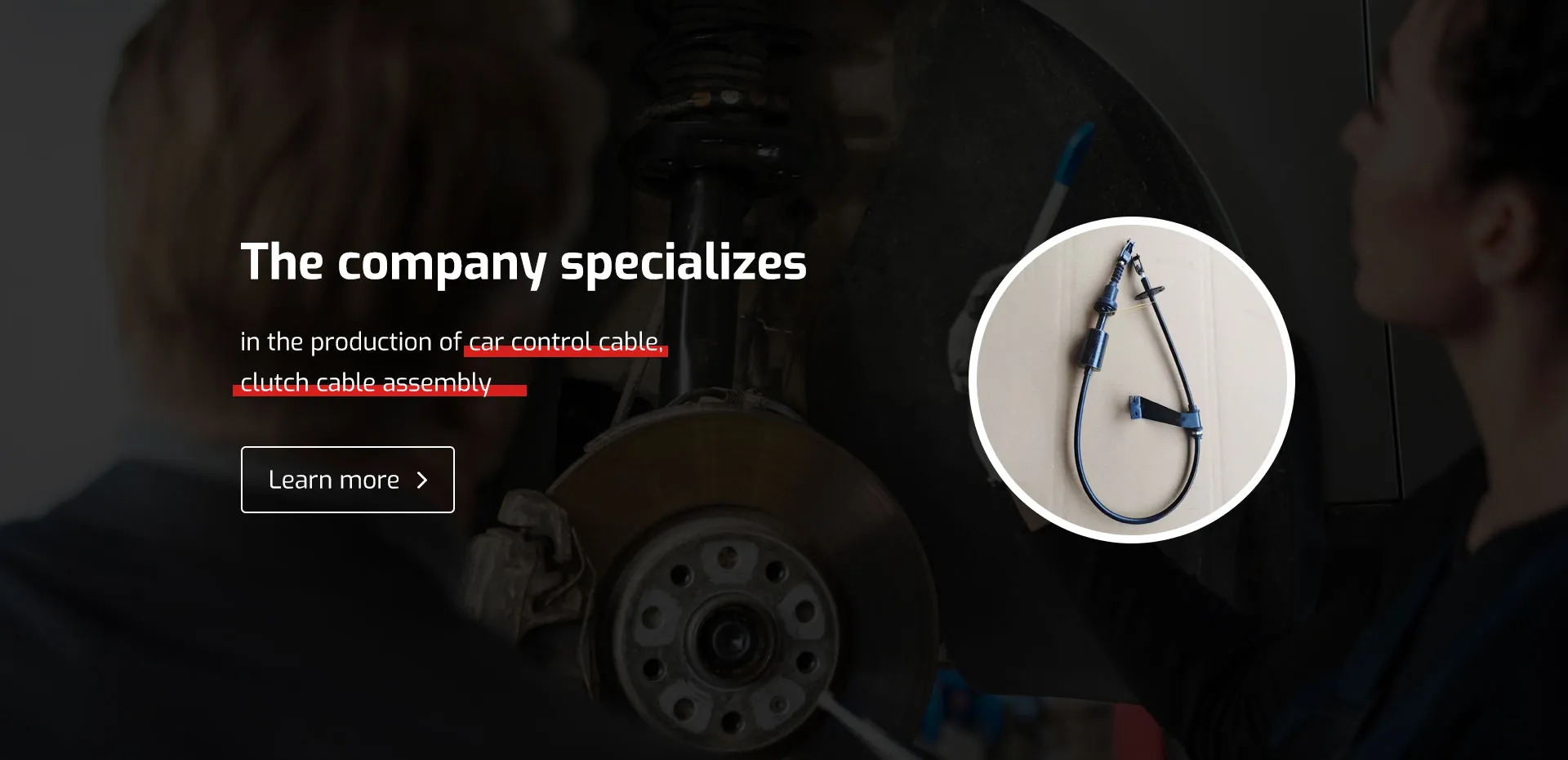short throttle cable
Understanding Short Throttle Cables A Guide for Enthusiasts and Mechanics
Throttle cables are fundamental components in many vehicles, especially in motorcycles and older cars. They connect the throttle body to the accelerator pedal, allowing the driver to control the engine's power output. While most people may not give much thought to these cables, understanding their specifications, particularly the short throttle cable, can greatly affect performance, maintenance, and modifications for vehicle enthusiasts and mechanics.
The Basics of Throttle Cables
A throttle cable works by pulling on a lever connected to the throttle body when the accelerator pedal is pressed. This action opens the throttle valve, letting air and fuel into the engine, which subsequently increases power and speed. Throttle cables come in various lengths, with short throttle cables typically designed for specific applications, providing a cleaner and more direct connection in compact setups.
Why Choose a Short Throttle Cable?
1. Space Efficiency Many performance vehicles, especially those with limited space in their engine compartments, can benefit from a short throttle cable. Having a cable that’s too long can create unnecessary loops and kinks, which may lead to friction, binding, or delays in throttle response.
2. Improved Throttle Response A shorter cable means less slack and a more direct connection between the accelerator and throttle, resulting in quicker response times. This sensitivity is critical for racing applications and performance modifications where every millisecond counts.
3. Customization For enthusiasts modifying their vehicles—such as those who are installing aftermarket throttle bodies or superchargers—a short throttle cable is often necessary to fit the new configuration. Custom installations often require precise measurements, and a short throttle cable is crucial for achieving the perfect length without compromising operation.
Installation Considerations
Installing a short throttle cable may seem straightforward, but there are several considerations to keep in mind
short throttle cable

1. Compatibility Ensure that the short throttle cable you choose is compatible with your vehicle's make, model, and the specific throttle body used. Mismatched components can lead to performance issues or potential damage.
2. Adjustment After installation, proper adjustment is key. The throttle should open completely when the pedal is pressed down, and there should be no excessive slack in the cable. Most throttle cables come with adjustment options, but it’s crucial to ensure that they are correctly aligned to avoid binding.
3. Quality Materials Invest in high-quality throttle cables made from durable materials to withstand wear and tear. Inferior cables can fray or snap over time, leading to unexpected failures—potentially resulting in serious performance issues or safety hazards.
Maintenance and Troubleshooting
Like any other part of a vehicle, throttle cables require maintenance. Regular inspections can help identify any early signs of wear. Look for fraying, kinks, or corrosion on the cable, and ensure the housing is intact. Lubricating the cable can help improve function and reduce the wear over time.
If you experience issues such as poor throttle response or the vehicle not accelerating properly, it may indicate a problem with the throttle cable. Common causes include - Misalignment at the throttle body or the pedal - Excessive slack or tension - Damage or corrosion
In these cases, it may be necessary to replace the throttle cable entirely rather than attempting repairs.
Conclusion
Short throttle cables are essential components for enhancing performance and facilitating modifications in various vehicles. Their advantages in terms of response time and efficiency make them a popular choice among enthusiasts and professional mechanics alike. However, attention to detail during installation and routine maintenance can ensure longevity and optimal performance. Whether you are a dedicated mechanic or a DIY enthusiast, understanding the intricacies of throttle cables—especially their short variants—can lead to better performance and an overall enhanced driving experience. Always remember that the right parts, proper installation, and consistent upkeep are key to keeping your vehicle in peak condition.
-
Workings of Clutch Pipe and Hose SystemsNewsJun.04,2025
-
The Inner Workings of Hand Brake Cable SystemsNewsJun.04,2025
-
The Secrets of Throttle and Accelerator CablesNewsJun.04,2025
-
The Hidden Lifeline of Your Transmission Gear Shift CablesNewsJun.04,2025
-
Demystifying Gear Cables and Shift LinkagesNewsJun.04,2025
-
Decoding Clutch Line Systems A Comprehensive GuideNewsJun.04,2025
